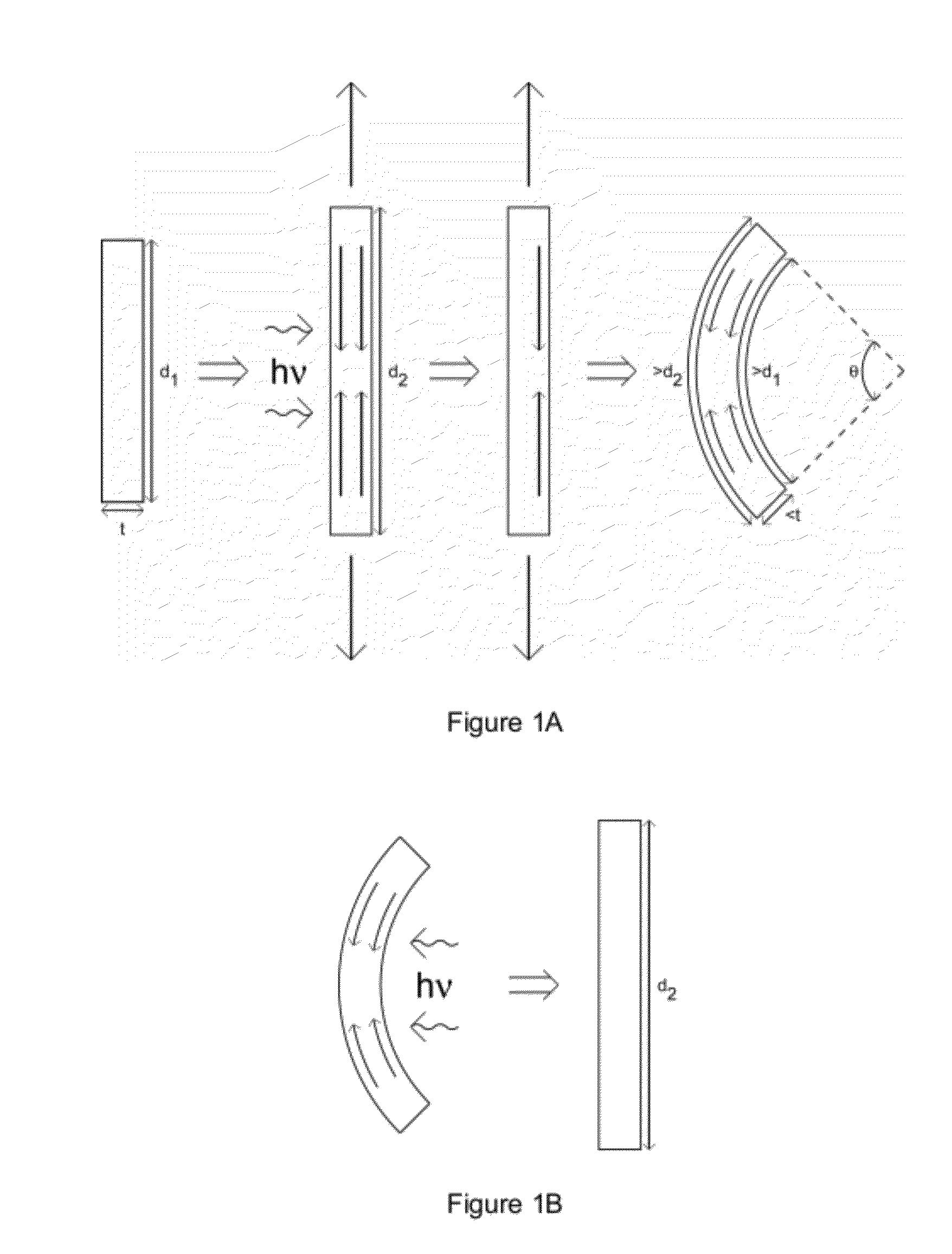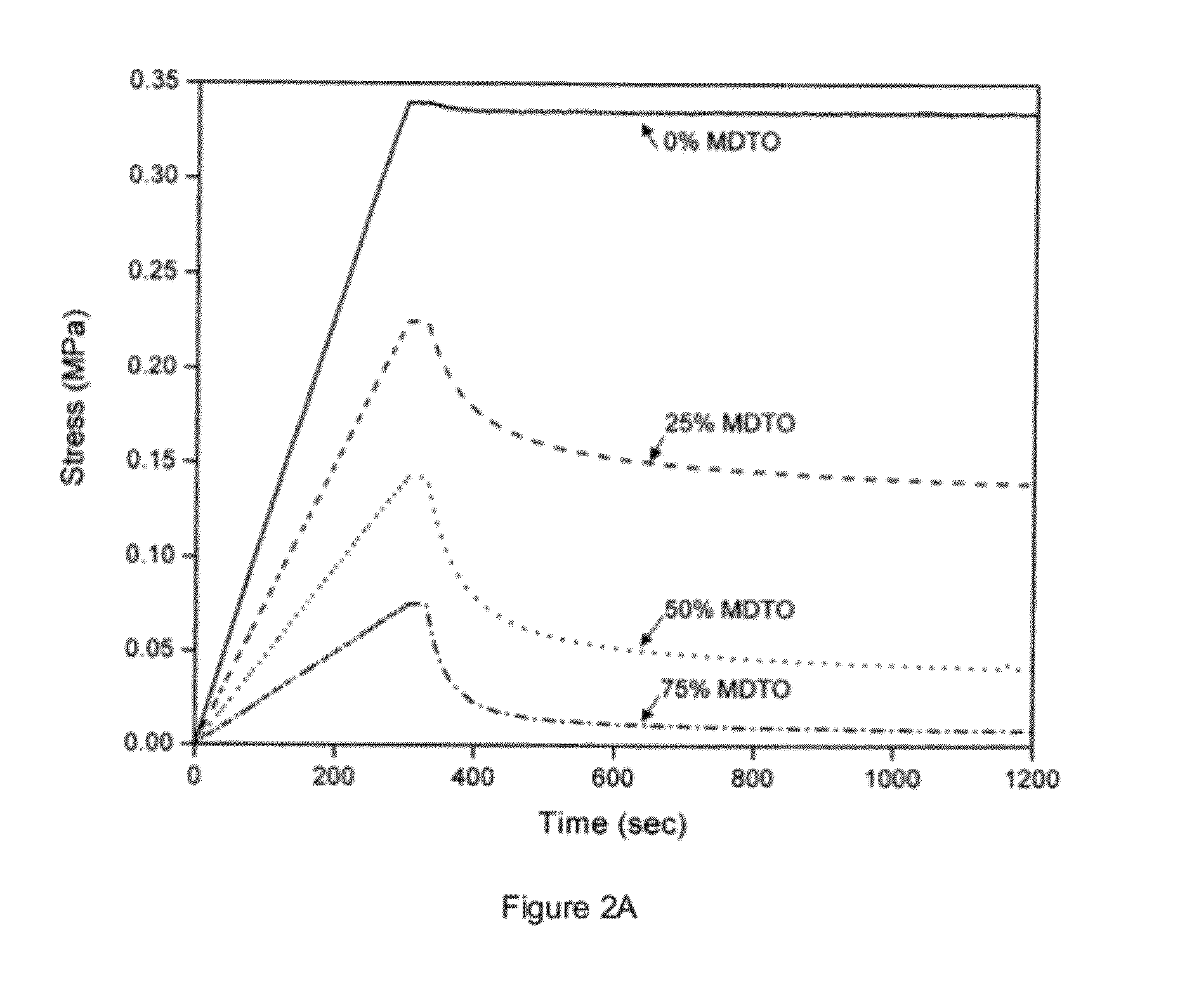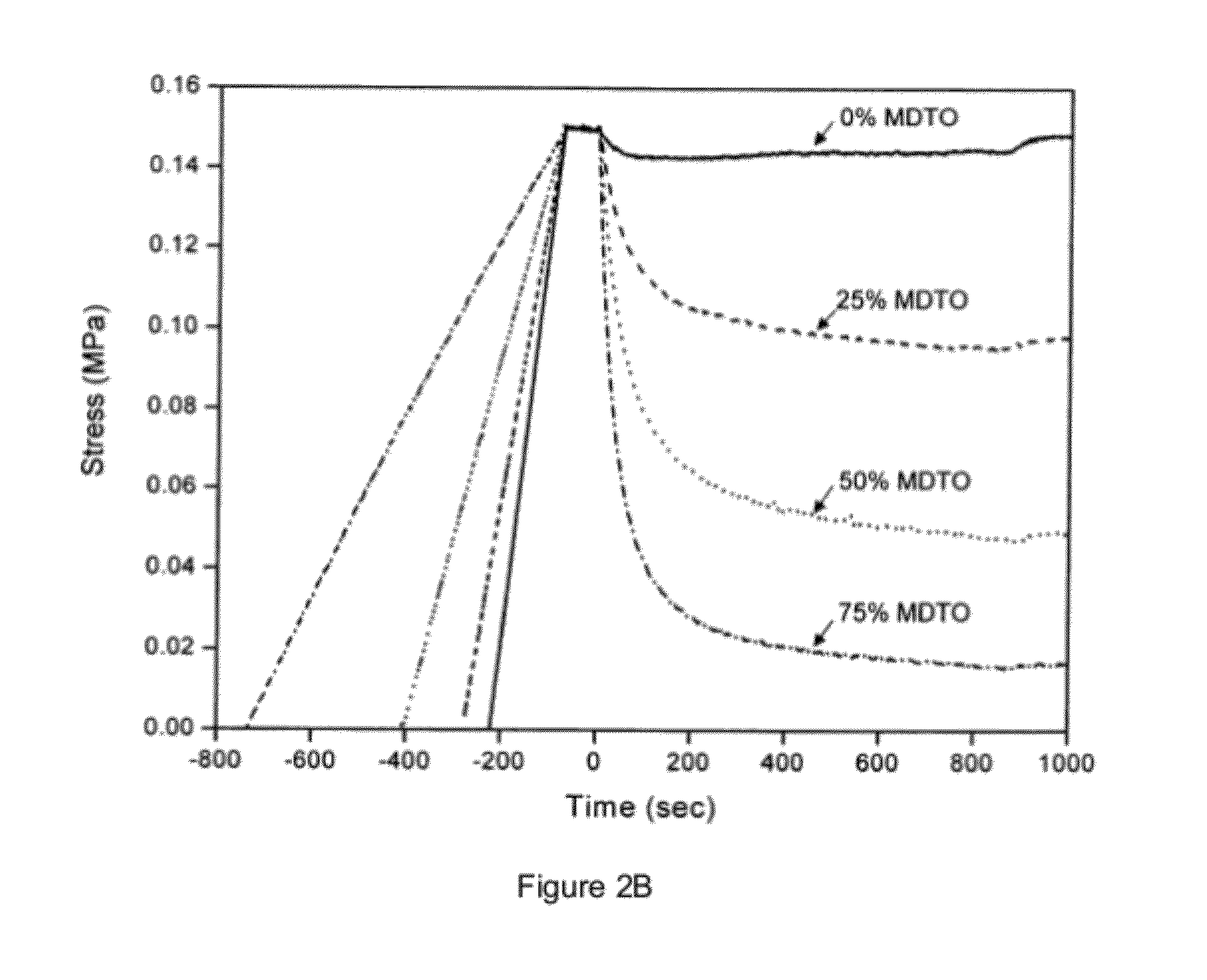Stress Relief for Crosslinked Polymers
a crosslinked polymer and stress relief technology, applied in the field of crosslinked polymers, can solve the problems of internal stress warping or cracking the material or the underlying substrate, reducing the ultimate mechanical properties of the cured polymer, and/or limiting its application, etc., to achieve the effect of relieving stress
- Summary
- Abstract
- Description
- Claims
- Application Information
AI Technical Summary
Benefits of technology
Problems solved by technology
Method used
Image
Examples
example 1
Formulation of Tetrathiol / Divinyl Ether / MDTO Materials
[0111]The base network was formed from a stoichiometric mixture of pentaerythritol tetra(3-mercaptopropionate) (PETMP) and triethyleneglycol divinylether (TEGDVE) which produces a rubbery network with a glass transition temperature of approximately −25° C. This monomer system was modified with the addition of varying concentrations of the ring opening monomer 2-methyl-7-methylene-1,5-dithiacyclooctane (MDTO) as a comonomer.
[0112]Resins were formulated with two photoinitiators, one active in the visible region of the spectrum (Irgacure 784 (a titanocene derivative from Ciba Specialty Chemicals)) at 0.1 wt % and one active in the near ultraviolet (Irgacure 819 (a phenylphosphine oxide derivative from Ciba)) at 0.25 wt %, unless otherwise stated. The visible photoinitiator photolyses rapidly and photobleaches significantly during the curing stage, thus the ultraviolet photoinitiator was included in the formulation to ensure residual...
example 2
Stress Relaxation of Tetrathiol / Divinyl Ether / MDTO Materials
[0113]Specimens for stress relaxation experiments had approximate dimensions of 60 mm long×7 mm wide×0.9 mm thick. These specimens were mounted in a MTS Synergie 100 mechanical tester fitted with a 10 N load cell and the initial gap between the grips was set to 40 mm. For the ‘constant initial stress’ experiments, a strain rate of 0.0064 min−1 was applied until a stress of 0.15 MPa was achieved then the strain was maintained for the remainder of the experiment. The specimen was then irradiated (320-500 nm, 20 mW·cm−2) for 15 minutes, starting 60 seconds after the stress of 0.15 MPa was achieved.
[0114]FIGS. 2A and 2B show stress versus time for four MDTO concentrations (solid line, 0 wt %, dashed line, 25 wt %, dotted line, 50 wt %, dashed-dotted line, 75 wt %). FIG. 2A is for constant strain (irradiation started at t=330 sec); FIG. 2B is for constant initial stress (offset to align the start of irradiation at t=0, irradiati...
example 3
Selective Stress Relief of Tetrathiol / Divinyl Ether / MDTO Materials
[0118]Stress gradients through specimens were introduced by irradiating rectangular, optically thick specimens on one side only that were under tension. These specimens were almost equivalent to those used in the stress relaxation experiments; however, they contained 0.1 wt % Irgacure 784 and 2.5 wt % Irgacure 819 before polymerization to yield a significant optical gradient through the specimen thickness. They were irradiated at 365 nm, 20 mW·cm−2 for 15 seconds while under a strain of 0.0375.
[0119]FIG. 3 shows specimens with stress gradients through their thickness on a 2 mm×2 mm grid. Specimens from left to right: 0, 25, 50 and 75 wt % MDTO. The direction of irradiation (365 nm, 20 mW·cm−2 for 15 seconds) used for the creation of the stress gradient for each specimen was from left to right.
PUM
| Property | Measurement | Unit |
|---|---|---|
| size | aaaaa | aaaaa |
| size | aaaaa | aaaaa |
| shrinkage stress | aaaaa | aaaaa |
Abstract
Description
Claims
Application Information
 Login to View More
Login to View More - R&D
- Intellectual Property
- Life Sciences
- Materials
- Tech Scout
- Unparalleled Data Quality
- Higher Quality Content
- 60% Fewer Hallucinations
Browse by: Latest US Patents, China's latest patents, Technical Efficacy Thesaurus, Application Domain, Technology Topic, Popular Technical Reports.
© 2025 PatSnap. All rights reserved.Legal|Privacy policy|Modern Slavery Act Transparency Statement|Sitemap|About US| Contact US: help@patsnap.com



